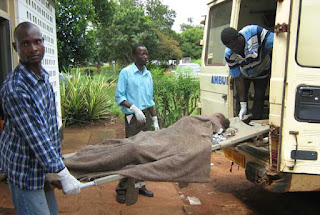Health authorities in Kyotera District are alarmed as cholera has struck the densely populated Kasensero landing site, resulting in one fatality and four individuals hospitalized in critical condition.
Cholera, an acute intestinal infection caused by contaminated food and water, poses severe risks including diarrhea, dehydration, and even death if not promptly treated, as outlined by the World Health Organization (WHO). Joseph Girimani, the Kyotera District surveillance focal person, affirmed that rigorous measures are being taken to contain the spread of this waterborne disease.
Girimani stated, “I received reports over the weekend from our facility at Kasensero indicating that approximately five individuals suspected of cholera infection had been admitted, with one fatality reported from a private clinic in the vicinity.” He further emphasized the mobilization of Village Health Team members to conduct proactive house-to-house campaigns, urging community members to seek early medical intervention.
Patrick Kintu Kisekuulo, the Kyotera District chairperson, highlighted the heightened risk of cholera transmission due to the dense population and poor hygiene practices prevalent at the landing site.
Recognizing the district’s limited capacity, Kisekuulo appealed to the central government for swift intervention, particularly in providing clean and safe drinking water to residents.
Cholera, if untreated, can be fatal for up to 50 per cent of those infected; however, timely treatment drastically reduces the mortality rate to less than one per cent, according to scientific findings.
With a population of approximately 15,000 people, most engaged in fishing as their primary economic activity, the Kasensero landing site faces challenges such as inadequate sanitation facilities, which exacerbate the spread of cholera.
The area’s susceptibility to pandemics, exemplified by previous threats like Marburg, underscores the urgent need for comprehensive public health interventions.
Moreover, concerns have been raised regarding the potential cross-border transmission of the disease to Tanzania, given the daily interactions between residents of the two neighbouring countries.






